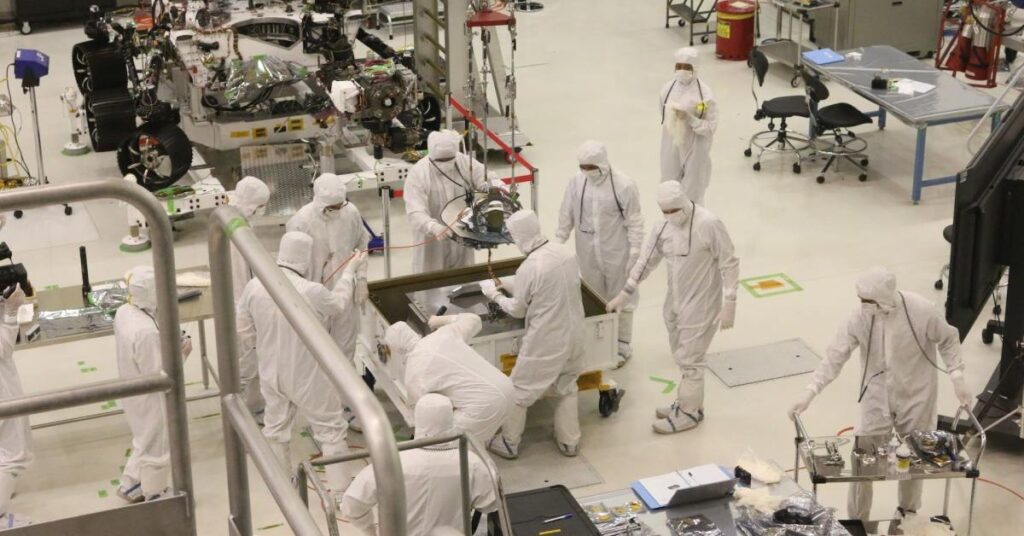
How to Choose an Online MBA
Online MBA programs make their degrees available to everyone everywhere, [...]

Online MBA degrees have captured wide public attention only in the past decade, but they’ve been around for much longer. In fact, American schools have offered this master’s-level business program for over 30 years; for-profit Aspen University reportedly mounted the first online MBA in 1987. In that era of dialup connections and slow, clunky personal computers, Aspen’s online business degree was essentially a traditional correspondence program with a few online elements incorporated.
For-profit schools dominated online education for the next two decades, to the detriment of online’s reputation. Unethical recruiting and financial aid practices at for-profits made headlines, and not in a good way. Technical limitations—insufficient bandwidth to support streaming video and teleconferencing, to name two—proved further disincentives to launching online degree programs. Traditional nonprofit education institutions—which tend to be conservative, averse to risk and change—kept their distance.
Many of the myths surrounding online education originated in this era, which spanned from 2000 to 2010. And while all are now outdated and untrue, they nonetheless persist in public conversation regarding higher education. This article collects and corrects the most frequently repeated misconceptions about online MBA programs. In it, we’ll discuss the 11 biggest myths of business school online, which include:
From the mid-1980s through the 1990s, the schools offering online MBA degrees weren’t exactly household names. Many even lacked accreditation from one of the major certifying organizations (AACSB, ACBSP, IACBE).
That all changed in 1999, when Indiana University‘s Kelley School of Business launched Kelley Direct. With this bold step, Indiana become “the first top-ranked school to offer online education” in business administration and management at the graduate level.
In 2010, the University of North Carolina‘s Kenan-Flagler Business School became the nation’s second top 20 program to launch on online MBA; Carnegie-Mellon University‘s Tepper School of Business followed closely behind. By 2015, US News & World Report was considering 195 online MBA programs to determine which ones ranked highest. The ranks of online MBA programs had grown from an innovative few to a sizable crowd.
Today you can pursue a full-time or part-time online MBA from over 300 accredited institutions, including such nationally respected schools as:
More top schools—and lower-tier schools, and expensive schools, and affordable schools, and everything in between—add online MBA programs every year. The days when earning an online MBA meant getting your degree from a no-name university are long gone, and they won’t be returning.
| University and Program Name | Learn More |
|
Pepperdine University:
Online Master of Business Administration
|
|
|
Stevens Institute of Technology:
Online Master of Business Administration
|
|
|
Merrimack College:
Master of Science in Leadership
|
|
|
Merrimack College:
Master of Science in Management
|
|
|
The University of Tennessee:
Online Master of Business Administration
|
Let’s start by discussing how online MBAs and on-campus MBAs are identical or nearly identical:
Consider the curriculum for the traditional MBA at Howard University‘s Graduate School of Business:
Compare that to the business courses that make up the core curriculum for the school’s online MBA:
The only difference between the two is that the online program requires one fewer elective/specialization course, and the sequencing of the required courses varies slightly. They are, in essence, the same program, differing only in delivery method.
Online MBAs can be delivered in one of two formats: entirely asynchronous or combined synchronous/asynchronous, sometimes referred to as a hybrid format (this term can be confusing, for reasons we’ll discuss in a bit).
Entirely asynchonous content is available to students any time, 24/7. In an entirely asynchronous program, students access all coursework—readings, lectures, and assignments—at their own convenience. They must meet specified deadlines, but those are the only time constraints. Their online courses never meet live.
Combined synchronous/asynchronous programs deliver much of their material asynchronously. Lectures are typically videotaped or presented in some other produced video format. Readings are posted within the learning management system (LMS), the online environment through which students access courses. Synchronous events include live classes—frequently dedicated to class discussion, problem review, and other interactive learning activities—and, in some programs, in-person immersions, which usually require students to travel to campus or another location for a long weekend.
Some programs schedule several immersions in their curricula. The online MBA at Southern Methodist University (SMU), for example, requires two four-day trips “to cities chosen for their strategic relevance to the business community,” during which students “gain hands-on experience working in teams on a real-time project that will challenge you to overcome complex corporate obstacles in a fluid global market.”
Immersions, by the way, are the source of confusion over the term “hybrid.” Some schools use “hybrid” to describe programs that are mostly online, but which require occasional in-person immersions. Since these programs are not 100 percent online, the schools call them “hybrid,” i.e., a mix of online and in-person. Other schools describe programs with live online classes as “hybrid,” i.e., a mix of synchronous and asynchronous content. Each school’s website will clearly indicate what it means when it describes its program as “hybrid.”
Regardless of format, students are likely to interact with faculty through virtual office hours—typically facilitated by Zoom or some other online conferencing app—email, instant messaging, and message boards. Students in synchronous classes will also interact with faculty during class; most online MBA programs keep class sizes small to ensure that faculty can call on each student at least once during a live session. In short, online learning provides many points of contact between students and faculty.
Online students interact with each other in much the same way they interact with faculty: via teleconferencing, email, instant messaging, and bulletin boards. For those whose programs include synchronous classes, students engage with each other during class discussion as well. In addition, online MBA students frequently form facebook groups and communicate via other social media outlets (Twitter, Instagram, etc.). Immersion experiences also provide students opportunities to collaborate and network.
The University of Tulsa explains that students in its program use Zoom to “facilitate peer-to-peer collaboration via breakout sessions” and “connect one-on-one with faculty from anywhere in the world.” Another interactive app, Yellowdig, creates “a digital social learning community that enables students to engage in learning by sharing and commenting on written or media content.” It also “provides access to a point system that motivates student participation and engagement in the classroom.”
Regardless of format, online MBA programs promote student engagement and collaboration through group projects, study groups, and social media. You may be surprised to learn that many online students live relatively close to the school they attend—often no more than a one- or two-hour drive away. It’s not unusual for students to meet in person for meals or drinks. All told, student interaction in online MBA programs is comparable to other part-time programs.
You may have heard that anyone with a bachelor’s degree and a pulse can earn an online MBA. This misconception dates back to the early days of online education when most providers were more interested in raking in federal loan money than providing quality degrees. In other words, they were diploma mills, which the Random House dictionary defines as “an organization claiming to be an institution of higher learning but existing for profit only and granting degrees without demanding proper qualifications of the recipients.” Those days are long gone, replaced by an era of strict external quality control and equally rigorous self-policing by degree-conferring institutions.
A prestigious university’s most valuable commodity is its reputation. People respect top institutions because everyone agrees that a degree from these schools confers skill and intelligence. Schools guard this asset because, without it, students would choose less expensive and/or more convenient options. That’s why online MBA programs apply the same standards to admissions, curriculum, and graduation as their on-campus programs. They receive the same accreditation from the same agencies. In short, they do everything they can to ensure that an online degree has the same value as one conferred via a traditional program.
Online programs can admit many more students than their on-campus counterparts. Limitations in physical space and support staff constrain the size of on-campus programs. Online programs face many fewer constraints—universities don’t need to worry about feeding or cleaning up after their online students, nor do they need to provide them a chair or heating. Online education eliminates significant problems in managing a school.
This is one of the primary reasons universities expand to online: to broaden their student base, reduce per-student overhead, and generate more revenue. The full-time MBA program at the University of North Carolina at Chapel Hill’s Kenan-Flagler School of Business, for example, welcomes between 300 and 350 new students each year. The school’s online MBA program admits nearly twice that many.
It’s understandable that some assume that reduced admissions standards would accompany increased enrollment, but that is not the case. As previously discussed, well-regarded universities vigorously protect their reputations because they constitute a significant part of what they sell. Accordingly, they apply the same admissions standards to online applicants as they use for traditional students. Students still need to show:
No. As previously discussed, online MBAs follow the same—or very similar—curricula as their on-campus counterparts. Online courses are usually taught by the same faculty who teach on-campus. Online students must meet the same admissions requirements and the same graduation requirements as their on-campus peers.
In at least one aspect, online MBA programs may be more challenging, or at least more enriching. Because most online students in MBA programs attend part-time while working as full-time managers, they tend to bring more insight and experience to the classroom than do students in full-time, on-campus programs. This is particularly true when comparing online programs to on-campus programs that admit students directly out of bachelor’s degree programs.
That’s not even taking into account the challenge of completing an MBA while working a full-time job. Many people do it every year, and you can too, but don’t kid yourself that it will be a breeze. Prepare to work hard and to forfeit some personal time to earn this valuable degree. Getting an online MBA will challenge you.
Many people assume that online MBA programs are less expensive than on-campus programs. After all, online programs don’t incur the costs of creating and maintaining classrooms, faculty offices, cafeterias, restrooms, and all the other facilities required for in-person learning. Further, online programs can significantly increase enrollment, arguably reducing per-student costs.
Some schools do, in fact, offer their online MBAs at a reduced cost, but they are the exception rather than the rule. Most schools charge the same for their online programs that they charge on-campus. Here’s why:
However, there are ways in which online MBA students save money in comparison to traditional students. Primarily, they save the time, expense, and stress of commuting to and from campus. They also save the cost of relocating, which can be considerable. Finally, they may save on some fees, although this varies from one institution to another.
Early efforts at online MBAs were indeed restricted by limited bandwidth, computing power, and technology. That was before the days when we could stream high-definition video on our cellphones, though. Today’s online MBAs are limited only by the imaginations of their creators. Live classes and study sessions stream in real-time on Zoom or a similar teleconferencing app. Massive documents that used to take minutes to upload and download now transport almost instantly. Video streaming over the internet is so robust that millions of Americans drop their cable television subscriptions every year; why pay for a service that modern bandwidth capacities render obsolete?
Modern online MBA programs utilize bandwidth-sucking apps such as games, roleplays, and management simulations. Students complete team projects and deliver final presentations online. Instructors present robust graphics in their live classes without any time lag or loss of fidelity. And the technology is only going to get more sophisticated in years to come. Online MBA programs can now reproduce anything a live instructor can do and even offer options that are easier to execute online than in a live classroom.
Online programs that are 100 percent asynchronous are mostly self-paced. Students typically have access to all course materials on the first day of class and may complete it as quickly or slowly as they wish, provided they complete their work by semester’s end. There are exceptions: in courses with a midterm, you may be required to complete a specific amount of work by the midterm date, for example. Or, some material may be gated, preventing you from accessing it until you have completed a previous assignment.
Programs that mix synchronous and asynchronous content are not as self-paced. Students are required to complete specific work before their live class session. They may, or may not, be allowed to work further ahead in the course; whether they can varies not only from program to program but also from course to course within a program. Students are free to complete asynchronous work whenever they want, provided they meet deadlines, but may not have the freedom to attack six weeks’ worth of content in a weekend, as they might in a 100 percent async course.
Measuring employment outcomes for online MBAs is tricky, for the same reason that it’s tricky to measure employment outcomes for in-person part-time MBA students: many students in these programs are delighted with their current employers. They aren’t looking to leave; they want promotions right where they are. In fact, some of them attend at their employer’s expense and are committed to remaining with their employer for a fixed time after graduation.
The website Poets & Quants figured the best way to figure out whether online MBA students were happy with the professional outcomes of their degrees was to ask them. According to their data:
Students in online MBA programs work one-on-one with career counselors, access alumni through alumni network events and online resources, and benefit from online job boards and recruiting events. By all appearances, they receive the same level of service from their schools and the same attention from employers as their peers in part-time on-campus programs.
To paraphrase a famous old saying, “A myth can travel halfway around the world while the truth is putting its shoes on.” Once out in the world, untruths and misconceptions are hard to retire. That’s certainly true of these myths regarding online MBAs, some of which were never true and others of which haven’t been true for more than a decade. Today, an online MBA—or any online master’s degree, or an online bachelor’s degree—meets the same criteria and carries the same prestige as its traditional corollary. And by delivering great programs to your home, online education makes it possible for you to earn your degree from a school thousands of miles away. That may sound mythological, but it’s an honest-to-goodness fact.
Questions or feedback? Email editor@noodle.com

Online MBA programs make their degrees available to everyone everywhere, [...]

In 2004, Burton D. Morgan Foundation and other Cleveland organizations [...]

International marketers have to consider local language(s), local norms and [...]

Organizations must design facility layouts and workstations in a way [...]

Many aspiring entrepreneurs understand the basic idea that the firm [...]
Categorized as: Business Administration, Business & Management